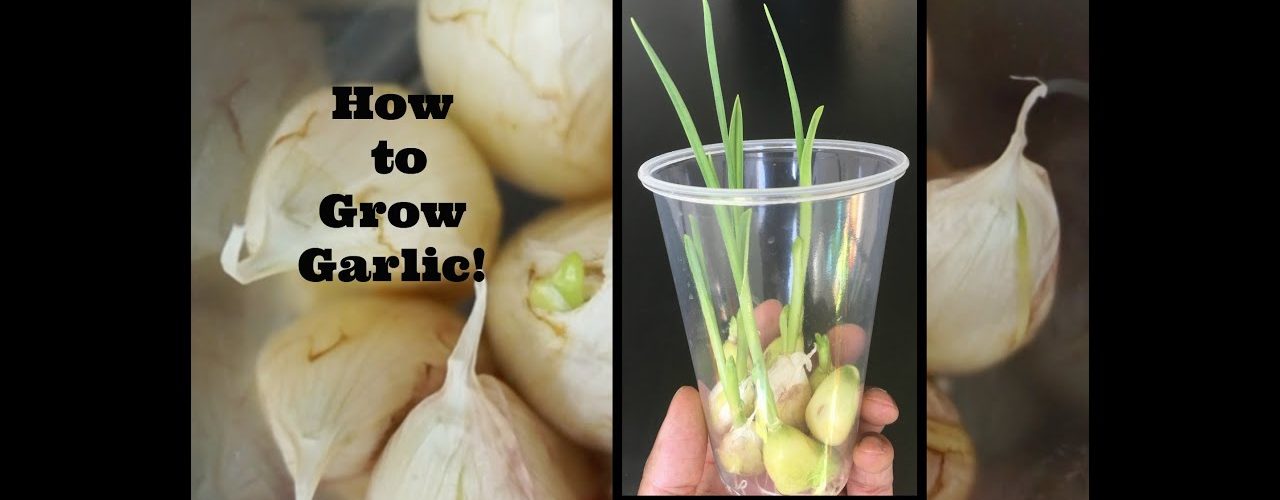Garlic is an easy to grow herb that even the most novice gardener can grow with success.
Contents
Types of Garlic
The common, or softneck, garlic is the type most often found in grocery stores. The silverskin variety of softneck garlic stores well and is easy to grow. Because of its numerous layers of parchment which extend up the neck, it is also easily braided.
The hardneck varieties are less common but for individuals who prefer a stronger flavor in their garlic, they may find that some of the hardneck varieties will provide that extra zest. The hardneck varieties produce scapes, a coil-like stalk which produces small bulbs at the end, and which softneck types won’t have. Hardneck varieties typically have less parchment covering and don’t store as well as the softneck varieties.
Soil and Planting Location
Garlic grows best in full sun and in a loamy soil with good drainage. It will also benefit greatly from some organic matter, such as well-composted manure, worked into the soil. A green manure crop, such as buckwheat, which has been tilled or turned under a couple of weeks prior to planting, also works well as a soil amendment.
A pH level between 6 and 7 will yield the best results. For a pH level of less than 5.8, the grower might find adding lime to the soil to be beneficial.
Garlic likes nitrogen. If the grower practices crop rotation and plants garlic in locations which have previously been planted in nitrogen-fixing crops such as peas or soybeans, adding additional nitrogen to the soil may not be necessary. If the leaves of the garlic plant develop a yellow color near their base, this could indicate a nitrogen deficiency and it may be necessary to add additional nitrogen in the form of blood meal or urea.
When and How to Plant Garlic
Because cold weather encourages the growth of the side bulbs which eventually form the cloves, most gardeners plant garlic in the fall. Planting garlic in October will result in a harvest in July but some gardeners traditionally plant garlic on the shortest day of the year/first day of winter (December 21) for a harvest in October. Planting four to five weeks before the predicted first frost allows the garlic time to develop a root system before the very cold weather arrives.
The best and largest of the cloves from each bulb should be planted as they will yield the best and largest bulbs at the time of harvest.
Plant the cloves, upright and with the root ends down, in the prepared soil at a depth of ½ to 1 inch. Space the cloves 3 to 5 inches apart, and if planting in rows, allow 18 to 30 inches between them. Protecting the garlic bed during the winter by applying mulch is generally advised, especially in areas where heavy freezes are common.
Garlic also grows well in containers and raised beds.
Harvesting and Storing Garlic
The garlic harvest should take place when the leaves turn yellow. Although some experts advise waiting until the tops turn yellow and completely die before harvesting the bulbs, others recommend not waiting that long but to harvest while the tops are still green near the top of the stalks.
To prevent damage to the stems, garlic should be dug from the ground rather than pulled. They should then be spread on a screen (an old window screen works well) and allowed to dry – or cure – in a location safe from pets, children, and rain. They can also be tied in bundles and hung to dry. Braiding is an attractive and efficient method of drying garlic, as well.
Drying/curing may take as long as a week or more and storage should not be attempted until the garlic is completely dry. The tops can then be cut off approximately 1 inch from the bulb and any dirt can be brushed off (not washed!). The bulbs can then be stored in a cool, dry, well-ventilated location. Properly cured garlic will store for 6 months or more.



